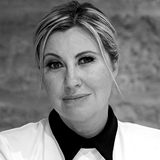The science is in, the numbers are in, this is going to be a profession where there are more females than males.
A new report by the Law Society of NSW has revealed surprising trends in the Australian legal profession.
It’s official: female lawyers outnumber male lawyers in Australia. The 2016 National Profile of the Profession has just been released and has revealed a national gender split of 50.1 per cent female lawyers to 49.9 per cent male for the first time in Australian history.
The profile of the profession report is the only study of its kind to capture a national demographic profile of practising solicitors around Australia. It compares data with the Law Society’s first national profile, which was released in 2011 and provided ground-breaking analysis of the legal profession.
“Before the commissioning of the first national profile in 2011, none of these data sets were available on a national basis,” says Law Society of NSW Chief Executive Officer Michael Tidball.
“The profile allows us to look at some of the big trends in the legal profession and therefore to sharpen our focus on things like planning for growth of the profession, and understand the nature of growth from one jurisdiction to another.”
Tidball says he is most surprised by the rapid growth in the number of new female solicitors entering the profession.
Double the number of females than males have entered the profession since 2011 (34 per cent growth in female numbers compared with 16 per cent male). While the national gender split has become almost even, the data shows there are slightly more women lawyers practising than men for the first time in Australia.
“The really interesting piece of data is about the gender movement,” Tidball says. “For the first time we’ve attained almost a 50/50 split nationally. Interestingly, female numbers are higher than that in NSW.
“The growth in female numbers emphasises the need for law firms and law societies to increase their efforts and strategies to boost the number of women in leadership positions.
“We need to be looking for and driving results hard. Because the science is in, the numbers are in, this is going to be a profession where there are more females than males.”
 MICHAEL TIDBALL, Law Society of NSW
MICHAEL TIDBALL, Law Society of NSW
The report highlighted an encouraging trend of employment growth for solicitors in all sectors of the profession, including private practice, corporate and government. There was proportionately higher growth in the number of small firms (two to four partners) compared to other sizes of firms in Australia.
The report also noted that the average age of solicitors in Australia has increased from 41.8 to 42.4, mirroring an Australia-wide labour trend of an ageing workforce.
At the time when the report’s data was gathered from each of the state law societies around Australia in October 2016 there were 71,509 practising solicitors in Australia. The largest proportion of those (42 per cent) was registered in NSW.
“This is a great example of the Law Society of NSW providing leadership to the national profession by providing comprehensive metrics,” Tidball says.
“We hope that, over time, we can expand and refine these data sets so that in future we can also include such things as graduate data and student trends, so all the law societies can improve their services and continue to develop important advocacy and policy work on a national level.”

An ageing workforce
Solicitors are an ageing entity, graceful or not. From 2011 to 2016, the average age increased from 41.8 to 42.4 years.
The biggest boom is in solicitors aged 65 years and over, which increased 23 per cent from 2014-16. At the other end of the spectrum, solicitors 24 years and under decreased by 14.9 per cent during the same period. Those in the middle, aged 35-39 and 45-49, grew by 12.7 and 14.3 per cent.
These trends aren’t surprising, as they mirror general Australian labour and population trends. In 2012, the adult population aged 55 and more (which the Australian Bureau of Statistics calls “mature aged”) was 31.3 per cent of the population; 17.2 per cent were 65 or older.
These numbers help explain why the overall employment rate of mature workers has increased by 87.9 per cent from 2002 to 2012.
 MARK DOEPEL, Sparke Helmore
MARK DOEPEL, Sparke Helmore
We’re like an extended family, every member has something to offer.
Mark Doepel, a partner at insurance specialist Sparke Helmore, has noticed the winds of change across all rungs of the legal career ladder.
“Twenty five years ago, it was more vocational. Everyone wanted to be a partner and was in it for the long haul,” he says.
“Now, there is a fundamental change. People have a much shorter horizon and are often following a different path.
“Years ago you would never admit you didn’t want to become a partner.”
But expectations have changed. When Doepel meets an impressive young lawyer in the firm these days, he expects that while they might want to join the partnership, they also might decide to follow a different path, from taking on an in-house role to starting their own business.
“It’s also more noticeable that people are coming to the law late in life,” he says, which may be, in part, due to increased legal educational options and pathways.
Doepel says Sparke Helmore also has more “mature” lawyers returning to private practice – including those who are more in the twilight than early hours of their careers – after pursuing different career paths, “bringing many valuable attributes to the firm, including a first-hand understanding of client needs and operations”.
“This firm sees the importance of their expertise, including their contacts across the market, as mentors to junior staff and access to key senior level people,” he says.
“We’re like an extended family, every member has something important to offer.”

Size matters
The report shows employment growth from 2011-16 was strongest at either ends of the size spectrum, although the results from 2014-16 paint a slightly different picture. From 2011-16, large firms (40-plus partners) grew by 12.1 per cent.
In the past two years, however, the increase slowed to just 1.4 per cent, the lowest for all segments including mid-tier firms. Growth in firms with 2-4 partners grew by 23.1 per cent, firms with 5-10 partners increased by 19.4 per cent, and sole practitioners grew by 17.5 per cent over 2011-16. From 2014-16, firms with 2-4 partners increased by 7.6 percent, those with 5-10 partners grew by 4.2 per cent, and sole practitioners by 3.4 per cent.
Although sole practitioners have always formed a large percentage of private legal practice, the increase in small firms reflects the changing interests and goals of younger workers across many industries, including the high-profile IT market.
 Mark Faraday, Henry William Lawyers
Mark Faraday, Henry William Lawyers
Clients can see the value in a small firm – they get you. They know how important they are to you.
Mark Faraday, like many other entrepreneurially-minded millennials, wanted to have a go at running his own business. After putting in some years at a large firm, he saw an opportunity and took the plunge.
In late 2016, Faraday set up shop in Tank Stream Labs, one of Sydney’s co-working environments for tech and innovative start-ups.
Today his firm, Henry William Lawyers, has two other partners and six employees. The firm provides services for a wide range of clients including insolvency practitioners, company directors, financial institutions and private clients.
Faradays says the amount of support he received has been a pleasant surprise.
“People want to help you; they are keen to see you try something new,” he says. He’s also found that clients and employees are quite open to engaging with a small, new firm.
“Clients can see the value in a small firm – they get you. They know how important they are to you,” Faraday says.
The other side of the equation for building a strong firm – having good lawyers – coincides with the changing goals of many young lawyers who are open to trading off the “tried and true” for different opportunities.
“When I was in law school, everyone wanted to get a job in a big law firm,” Faraday says.
“Nowadays, a lot of the top graduates are only interested in working in a start-up atmosphere. They want to be at the coalface.”
They are interested in pursuing the same goals as Faraday, including being able to have a real say in things, which for many youngish lawyers is hard to come by in a large, highly structured firm.“I love that sometimes we make important decisions about the firm in the lift,” Faraday says.“We love being small.”
Firms are a man down
In 2011, there were 10,632 law firms operating in Australia, and this grew to 15,535 law firms in 2016. This represents an increase of 46 per cent, yet the number of practising lawyers has only grown by 24 per cent.ccording to the report, new law firms appear to be cropping up faster than solicitors are being admitted to practice.
As a result, where firms used to average 3.9 lawyers per firm in 2011, the average number of lawyers per firm in 2016 has dropped to 3.1 per firm – the loss of almost a whole lawyer, on average.
This average may have been pulled down by an increase in sole practitioners and small firms, but it also could have something to do with the loss of staff from mid-tier law firms such as Henry Davis York.
Henry Davis York cut 25 staff from its Sydney office in May, representing more than 7 per cent of its Sydney workforce. In June, Norton Rose Fulbright announced its intention to merge with Henry Davis York by the end of 2017. The result will be a global firm of about 4,000 lawyers in more than 50 cities worldwide. The name Henry Davis York from the firm founded in 1893 will be gone.
 Zoe Bojanac, Rigby & Klaus
Zoe Bojanac, Rigby & Klaus
As technology improves, lawyers are downsizing to smaller group practices where they have more control and flexibility.
Sydney lawyer Zoe Bojanac started her career in mid-tier firms and has endured the mergers and upheaval dominating the sector.
“Between 1995 and 2005 I worked at Abbott Tout, Ebsworth & Ebsworth, PwC Legal and Hunt & Hunt,” Bojanac says.
“Many of the firms and practice groups that I worked with were collapsing and merging and there was no job security. Partners who had been there for 20 years were booted out. If you went on maternity leave it was a real risk that you might not have a job when you returned.”
In 2016, Bojanac opened her own small firm, Rigby & Klaus, with three associates in Sydney, where job security is no longer a problem.
She says that as technology has improved, lawyers have gained greater freedom and the ability to work in smaller groups on their own watches.
“I’m now the sole principal of my firm and my day isn’t determined by the hours of nine to five,” Bojanac says.
“I can leave work earlier to pick up my children from school and then log in and work from home later. Now that everything is in the cloud, I have flexibility and I’m the master of my own practice.”
Data from The Australian Financial Review Law Partnership Surveys indicates that the top-tier firms may increasingly be losing out to new law practices.
According to the surveys, Ashurst lost 44 partners between July 2013 and July 2016, Clayton Utz lost 24, Allens lost 23 partners, and King & Wood Mallesons lost 14. A report by Thomson Reuters and Melbourne University Law School also found that the demand growth for legal services from large firms has been steadily declining since 2010.
“I think as technology improves, lawyers are downsizing to smaller group practices where they have more control and flexibility,” Bojanac says.
“That technology has really only come about over the past five years. We couldn’t have done it five years ago.”





